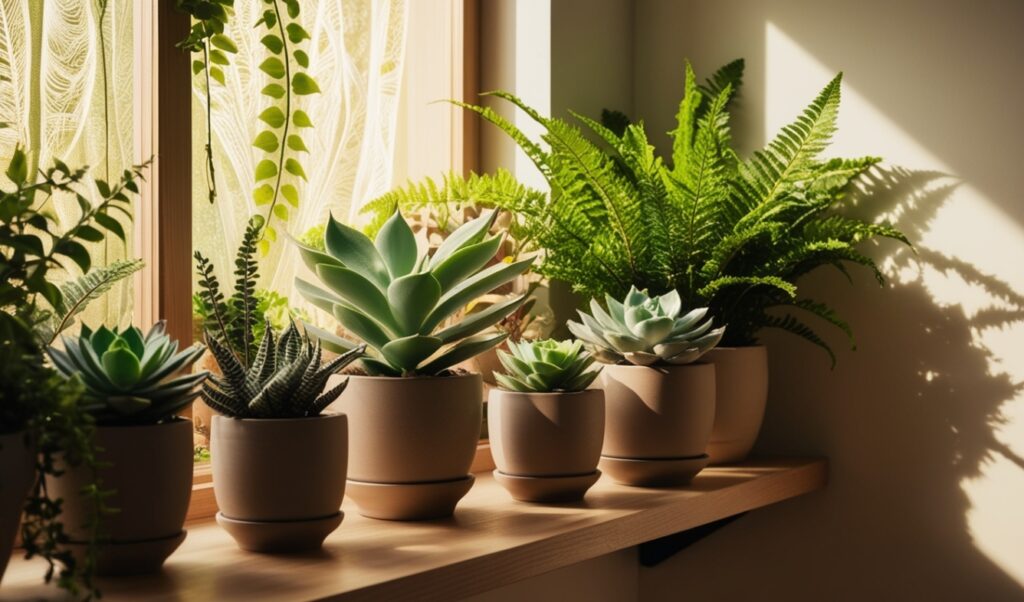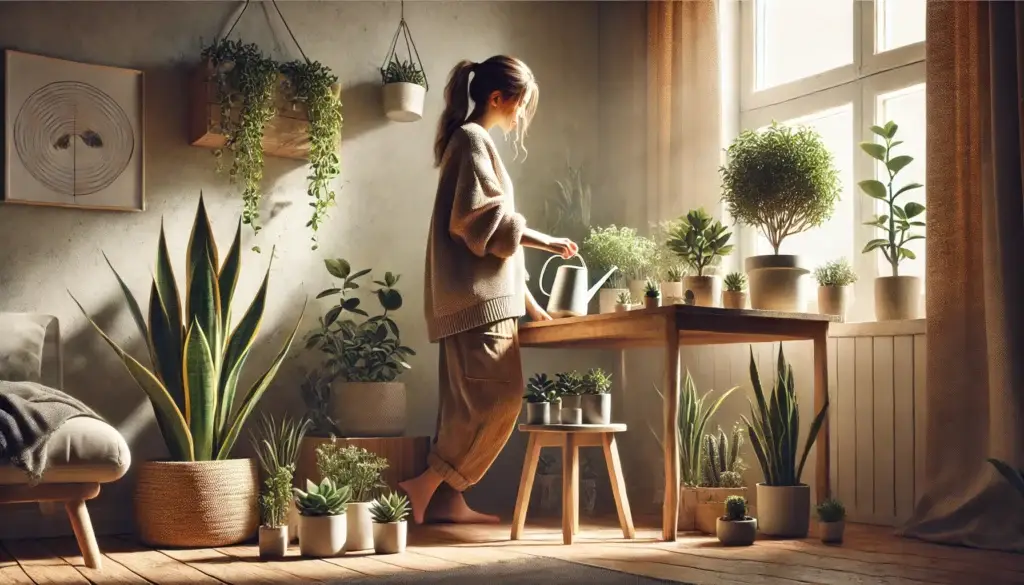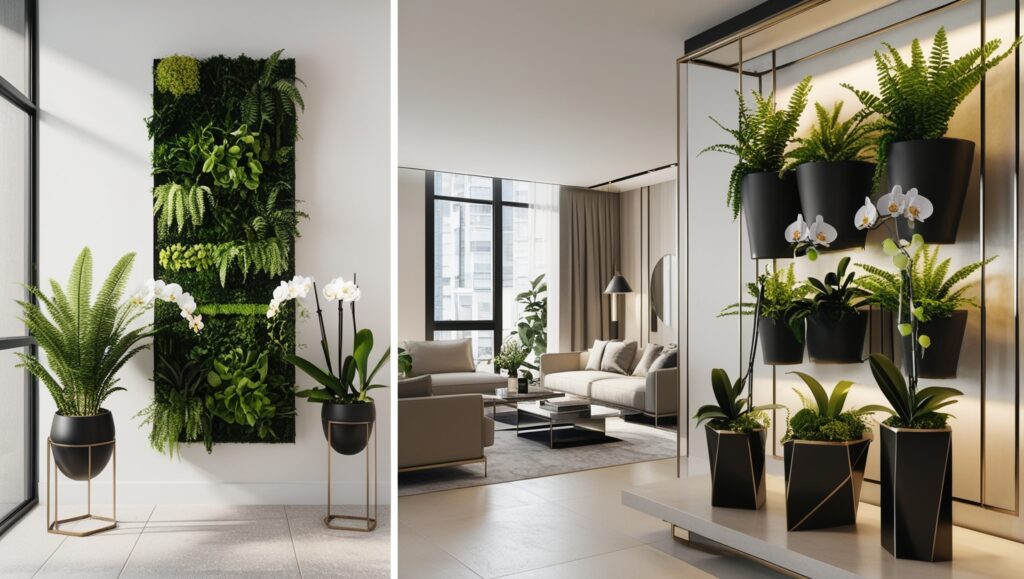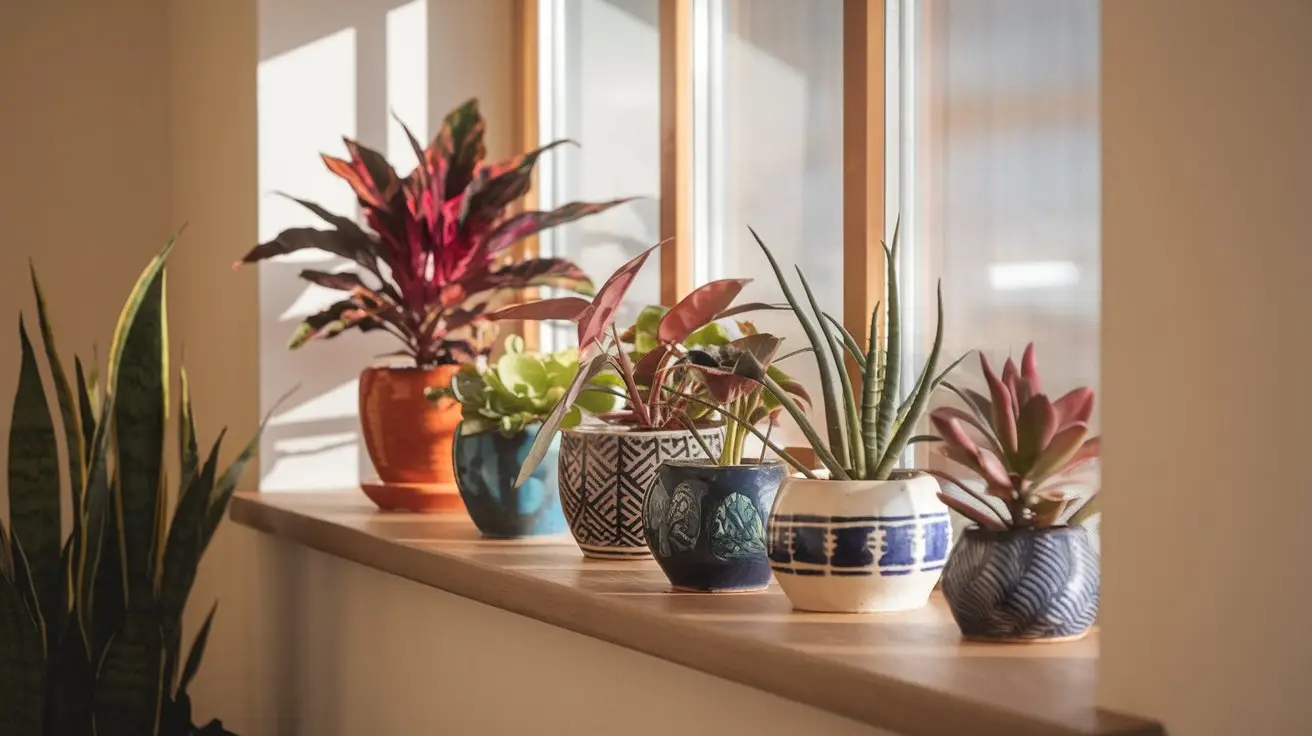Table of Contents
Introduction
The Benefits of Having Plants Indoors
Adding low-maintenance home plants to your home does more than just brighten up your space—it transforms it. Houseplants enhance air purity, alleviate stress, and increase productivity.
Whether you want to liven up your living room, create a tranquil bedroom oasis, or just add a touch of nature to your office, plants are your best bet. Let’s face it—not everyone is naturally skilled at keeping plants alive.
Why Choose Low-Maintenance Plants?
If you’re worried about keeping plants alive or think you’re too busy for plant care, don’t fret! Low-maintenance plants are here to save the day. These plants are resilient, adaptable, and perfect for people who want the aesthetic and benefits of greenery without the hassle. Ready to transform your home? Let’s dive into choosing the ultimate low-maintenance plants.
Understanding Low-Maintenance Plants

What Defines a Low-Maintenance Plant?
A low-maintenance plant is one that doesn’t demand constant care or attention. These plants thrive on minimal watering, adapt to various lighting conditions, and are generally pest-resistant. They’re perfect for beginners or anyone looking for easy indoor gardening options.
Common Myths About Plant Care
Think you need to water your plants daily? Or that all plants require bright, direct sunlight? These are common misconceptions. Many plants, especially low-maintenance plants, prefer indirect light and need watering only once a week or less. Debunking these myths is key to stress-free plant parenting.
Choosing the Perfect Low-Maintenance Plants for Your Space
Assessing Your Space and Lighting Conditions
Before buying a plant, evaluate your home’s lighting. Do you have big windows with lots of natural light, or is your space more shaded?
- Natural Light vs. Artificial Light: Plants like succulents thrive in bright, sunny spots, while others like the snake plant can survive in low-light conditions.
- Choosing Plants for Small vs. Large Spaces: If you’re tight on space, go for compact options like pothos or succulents. Large rooms can handle statement plants like fiddle-leaf figs.
Considering Your Lifestyle and Time Commitment
How much time can you realistically dedicate to plant care? If you’re constantly on the go, opt for hardy plants like ZZ plants or cacti that can handle irregular watering schedules. If you work from home and can check on your plants regularly, you might enjoy peace lilies or pothos, which benefit from occasional TLC.
Popular Low-Maintenance Indoor Plants🌿
Here are some tried-and-true favorites:
- Snake Plant: Virtually indestructible and a great air purifier.
- Pothos: Easy to grow, with trailing vines perfect for hanging planters.
- ZZ Plant: Thrives in minimal light and needs only occasional watering.
- Succulents: Low water needs and a variety of shapes and colors.
- Peace Lily: Low light, beautiful blooms, and air-purifying properties.
Caring for Low-Maintenance Plants🌿
Watering Basics
When it comes to watering, less is more. Giving plants too much water is a frequent error that often causes root rot.

- How Often to Water? Most low-maintenance plants need water once every 1–2 weeks.
- Signs of Overwatering or Underwatering: Yellowing leaves often indicate overwatering, while droopy or crispy leaves mean it’s thirsty.
Soil and Potting Essentials
The right soil and pot make a huge difference.
- Choosing the Right Soil Type: Use well-draining soil, especially for succulents and cacti.
- When to Repot: Repot plants when they outgrow their pots or every 1–2 years.
Light Requirements and Placement
Understanding light is key to plant health.
- Direct, Indirect, and Low-Light Needs: Snake plants and ZZ plants thrive in low light, while succulents need bright, indirect light.
Common Pests and How to Prevent Them
Even low-maintenance plants aren’t immune to pests.
- Identifying Pests: Look for tiny insects, sticky residue, or holes in leaves.
- Natural Remedies: Use neem oil or a mix of water and dish soap to deter pests.
Styling Your Home with Plants🌿
Enhancing your living space with low-maintenance home plants is a wonderful way to bring life and beauty indoors. Whether you prefer a formal, informal, or friendly aesthetic, there are plenty of options to choose from. Consider incorporating hardy plants like ZZ plants or cacti if you have a busy lifestyle, or opt for peace lilies or pothos if you can provide occasional care. These popular indoor plants will not only add a touch of green to your home but also create a calming and inviting ambiance.

Best Spots to Place Indoor Plants
Strategic placement can enhance your home’s aesthetic:
- Living Room: Place a statement plant like a fiddle-leaf fig near windows.
- Bedroom: Add air-purifying plants like peace lilies.
- Kitchen: Opt for herbs like basil or mint.
- Bathroom: Choose moisture-loving plants such as ferns or spider plants.
Creative Ways to Display Plants🌿
Think beyond traditional pots:
- Hanging Planters: Save floor space and add vertical interest.
- Shelving: Display plants alongside books or décor for a curated look.
- Terrariums: Perfect for small spaces and low-maintenance care.
Troubleshooting Plant Issues
Why Is My Plant Dying?
Plant problems can often be reversed if caught early.
- Diagnosing the Problem: Check for signs like yellow leaves, drooping, or pests.
- Quick Fixes: Adjust watering habits, relocate to a better-lit spot, or treat pests promptly.
When to Say Goodbye to a Struggling Plant🌱
Sometimes, despite your best efforts, a plant can’t be saved. That’s okay! Learning from the experience will help you grow as a plant parent.
Conclusion
Transforming your space with low-maintenance plants is easier than you think. With the right plants, a little care, and thoughtful placement, you can create a lush, inviting home. Even if you’re a beginner, these hardy plants are ready to thrive in your space.
FAQs
1. Can I keep low-maintenance plants in low-light areas?
Absolutely! Plants like the snake plant and ZZ plant are excellent for low-light spaces.
2. What’s the best way to clean plant leaves?
Use a damp cloth to gently wipe leaves, removing dust and allowing the plant to breathe better.
3. How do I know if a plant is truly low-maintenance?
Look for plants labeled as drought-tolerant or adaptable to various light conditions.
4. Are there any non-toxic plants safe for pets?
Yes, consider plants like the areca palm or parlor palm, which are non-toxic to pets.
5. Can I use artificial light for indoor plants?
Yes, LED grow lights mimic natural light and are perfect for plants in darker spaces.

